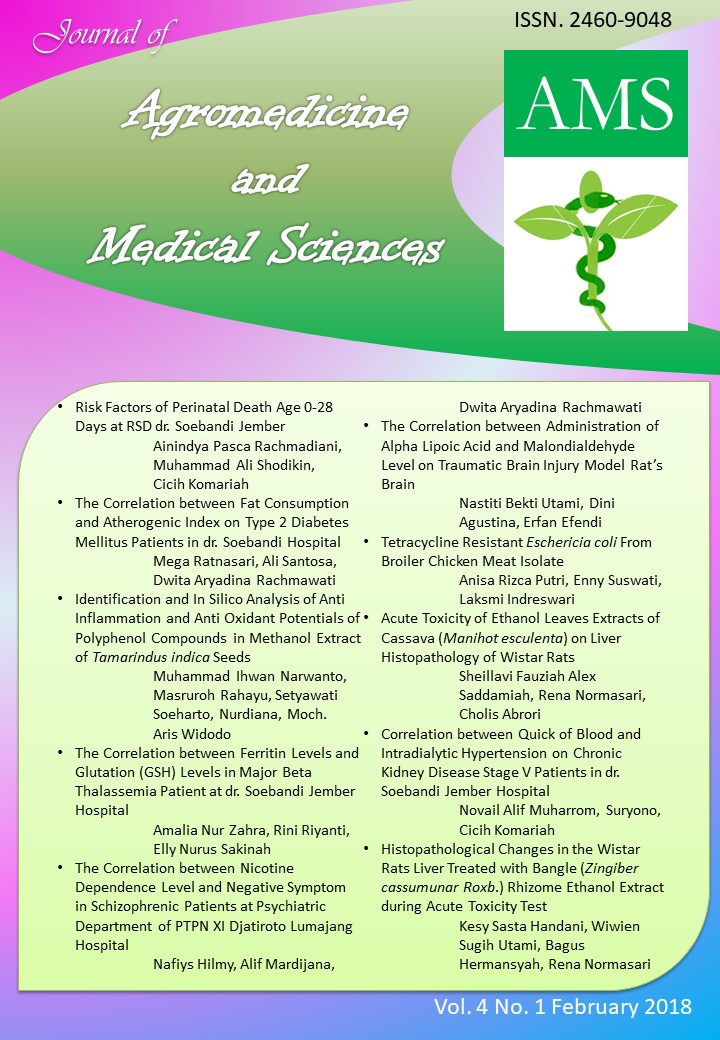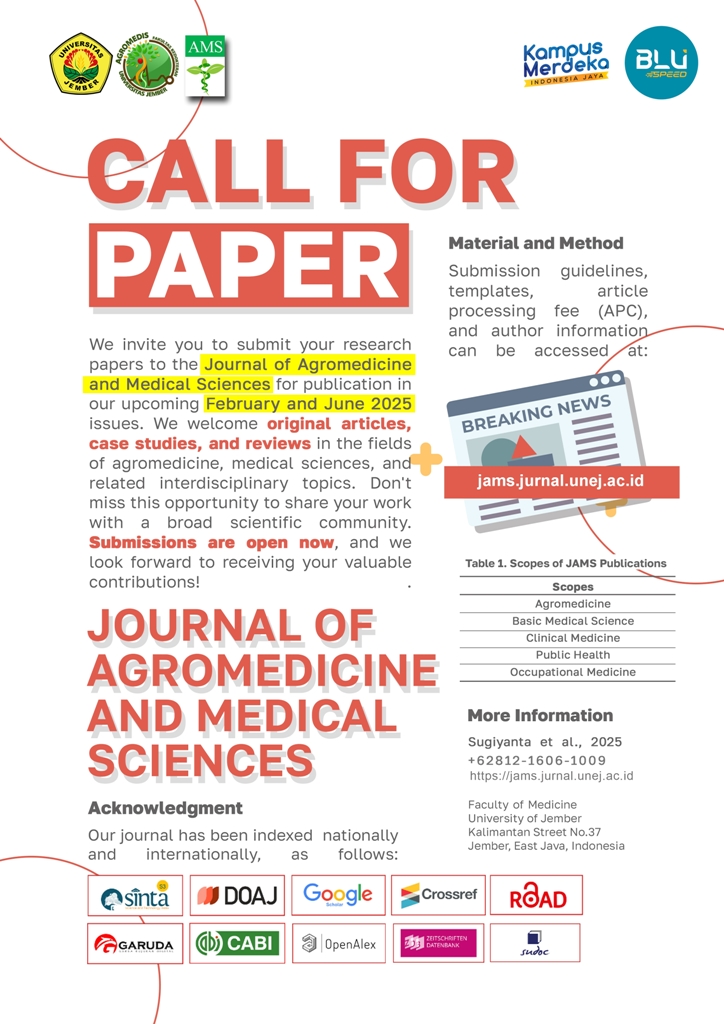Acute Toxicity of Ethanol Leaves Extracts of Cassava (Manihot esculenta) on Liver Histopathology of Wistar Rats
DOI:
https://doi.org/10.19184/ams.v4i1.6741Abstract
Cassava leaves (Manihot esculenta) contain cyanogenic glylcoside as toxicant. Cyanogenic glycoside can be hydrolized into glucose and cyanohydrin acetone which is then decomposed into cyanide. Cassava leaves are used by the community as a source of food and traditional medicine. However, there is a report of incidents of intoxication and death from cassava consumption in Kenya. This research is intended to know the effect of toxic dose ethanol extract of cassava leaves to liver histopathology of Wistar rats. This study was conducted through two stages, sighting study and main study. Both studies used initial dose level 2000 mg/kg and given once at the first day of each study. Main study consists of two groups, control group given 0,5% Na-CMC and treatment group given ethanol extract of cassava leaves dose 2000 mg/kg. All animals were observed for 14 days. Liver histopathology scores were obtained. Mann Whitney test showed that p= 0,009 (p<0,05) so that can be concluded that ethanol extract of cassava leaves dose 2000 mg/kg can cause histopathological changes in the liver of Wistar rats represented by cloudy swelling degeneration, hydropic degeneration, and necrosis in some cell.























